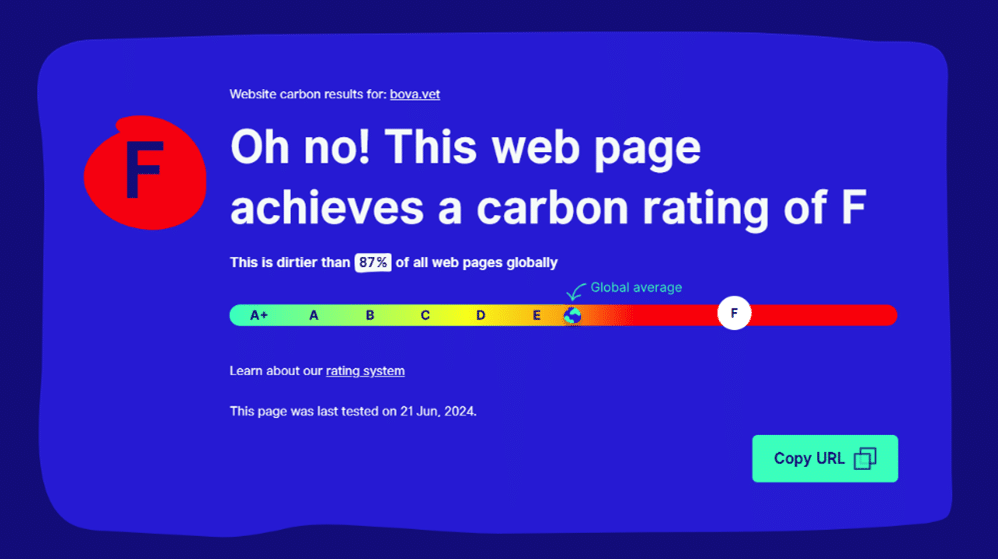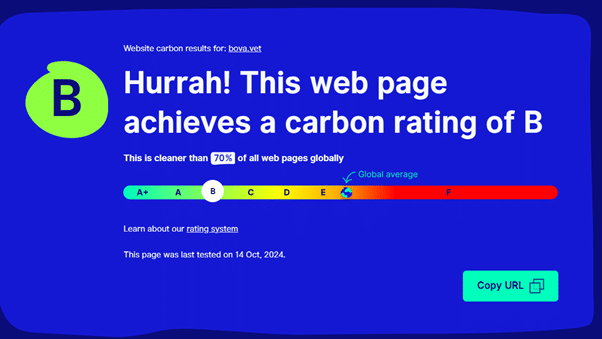Website Sustainability: A Growing Concern for Eco-Friendly Brands
In today’s digital age, websites can be surprisingly energy-hungry, with some emitting as much carbon dioxide as a car driving 1,000 miles. In fact, the collective CO2 emissions from websites surpass those of the entire aviation industry. As more consumers gravitate toward eco-conscious brands, making websites sustainable has become a priority.
At Bova, we put this to the test in June 2024. Our global website, www.bova.vet, initially received an F rating for its carbon emissions, producing over 0.847 grams of CO2 per page view according to a website carbon calculator.

To address this, our Digital Marketing expert, Yutong, led a series of optimisations aimed at improving our site’s sustainability and performance. Here are some of the key improvements:
- Page Caching: Converted dynamic content into static HTML, reducing server requests and boosting speed.
- Image Optimization: Compressed images and used efficient formats like WebP, reducing total image size by 68%.
- Lazy Rendering: Loaded off-screen content only when users scrolled, speeding up initial load times.
- Browser Caching: Stored files locally for returning visitors, cutting down on HTTP requests.
- Minifying CSS/JS: Removed unnecessary code, accelerating download times.
- LazyLoad: Delayed loading of media until users interacted with the page, improving performance.
- Database Optimization: Cleaned up the database to streamline operations and improve speed.
As a result of these efforts, our website now has a B rating, making it cleaner than 70% of global websites.

While we’ve made great strides, there are still areas for improvement, such as integrating a CDN and switching to greener hosting providers like GreenGeeks, which offers a 300% energy offset and tree planting initiatives.
We continue to explore ways to further reduce our digital carbon footprint, ensuring a faster, greener browsing experience for our visitors.

